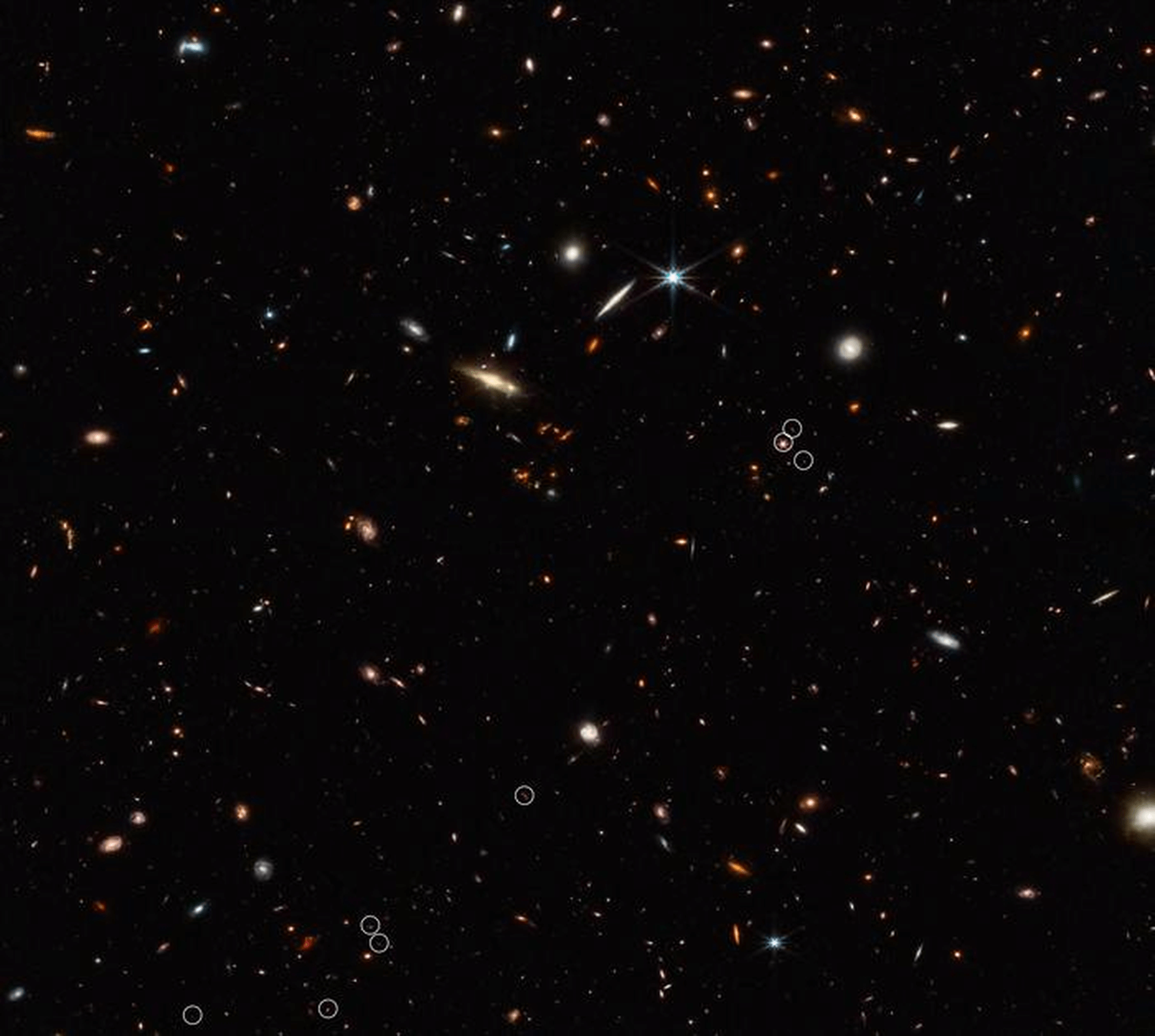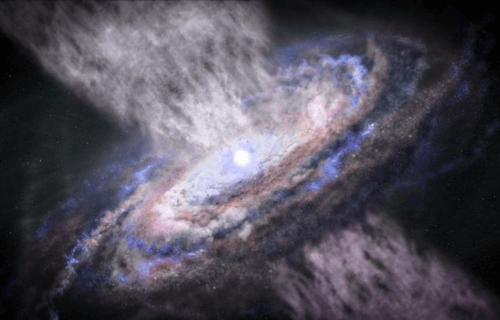TUCSON, Ariz. — Using the cutting-edge James Webb Space Telescope, a team of scientists, led by astronomers from the University of Arizona, has made a remarkable discovery: a string of 10 galaxies that existed a mere 830 million years after the Big Bang. Described as a “pearl necklace” of galaxies, this three-million-light-year-long structure is anchored by a luminous quasar — a galaxy with an active, supermassive black hole at its core. The researchers believe this filament will eventually evolve into a massive cluster of galaxies, similar to the well-known Coma Cluster found in the “nearby” universe.
“This is one of the earliest filamentary structures that people have ever found associated with a distant quasar,” says study lead author Feige Wang, an assistant research professor at the Steward Observatory, in a university release. “It is the first time a structure of this kind has been observed at such an early time in the universe and in 3D detail.”
Galaxies in the universe are not randomly scattered; rather, they form interconnected filamentary structures separated by vast voids. This “cosmic web” evolves over time as gravity draws matter together. Xiaohui Fan, Regents’ Professor of Astronomy at Steward, explains that galaxies ride along strings of dark matter known as filaments, similar to crests on ocean waves. The newly discovered filament is of particular interest because it is the first time such a structure has been observed at a time when the universe was only six percent of its current age.
The discovery was made as part of the ASPIRE project, led by the University of Arizona researchers. ASPIRE aims to study the cosmic environments of the earliest black holes, focusing on 25 quasars that existed within the first billion years after the Big Bang, known as the Epoch of Reionization. Joseph Hennawi from the University of California, Santa Barbara, a member of the research team, explains that the project seeks to understand the emergence of the earliest massive black holes and their connection to cosmic structure formation.
In addition to studying the filament, the research team investigated the properties of eight quasars in the early universe. They confirmed that these central black holes, which formed less than a billion years after the Big Bang, range in mass from 600 million to two billion times that of the Sun. The team aims to understand how these black holes could grow to such enormous sizes in a relatively short period.
Wang explains that to form supermassive black holes in such a short time, two conditions must be met: a massive “seed” black hole to begin with and an extremely rapid accretion of matter. The team’s observations indicate that these black holes are located in massive young galaxies that provide the necessary fuel for their rapid growth.

The James Webb Space Telescope observations also shed light on how early supermassive black holes regulate star formation in their galaxies. These black holes not only accrete matter but also generate powerful outflows of material called “winds.” These winds can extend far beyond the black holes themselves, impacting the formation of stars. The findings suggest that these winds can suppress star formation in the host galaxy, affecting its evolution.
“Such winds have been observed in the nearby universe but have never been directly observed this early in the universe, in the Epoch of Reionization,” states Jinyi Yang, an assistant research professor at Steward and the first author of the second publication. “In the Webb observations, we are seeing the scale of these winds extending throughout an entire galaxy and influencing its evolution.”
The discoveries made with the James Webb provide valuable insights into the early universe and the formation of galaxies and black holes. By unraveling the mysteries of these ancient structures, astronomers move closer to understanding the fundamental processes that shaped our cosmos billions of years ago.
The findings have been published in two papers in The Astrophysical Journal Letters.
You might also be interested in:
- James Webb telescope stunningly updates classic space image of the ‘Pillars of Creation’
- JWST teams with Chandra telescope to unveil spectacular new images of the universe
- 3 galaxies from the early universe are sitting on our cosmic doorstep, astronomers reveal

